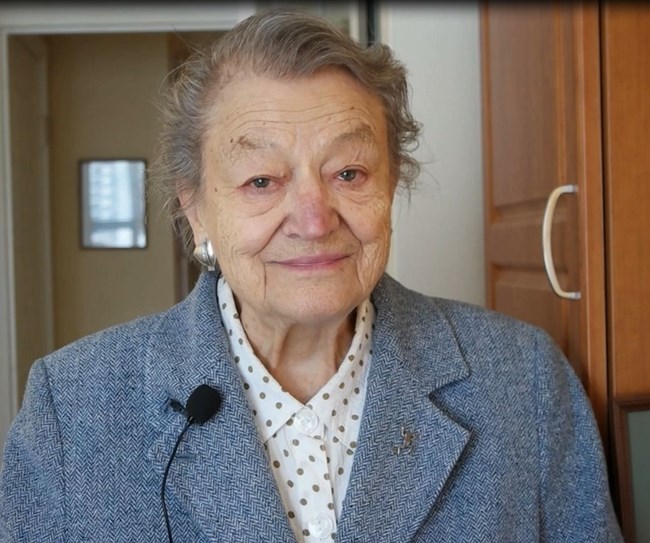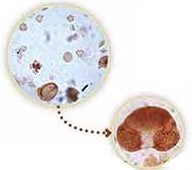
Dr. Estella Leopold What can fossil pollen tell us about Florissant's climate 34 million years ago?Pollen may cause sniffles and sneezes, but ancient pollen preserved in Florissant's rock record provides clues to the ancient climate here. Some of the Eocene trees are known only from fossil pollen instead of leaves.Pollen provides the only evidence for some plants that frew only on the higher slopes more distant from the lake. Up Close and DetailedThe size of pollen grains varies between plant species, ranging from about 20 to 150 microns in length. In other words, over a thousand of the smallest pollen grains lined up end to end would only measure about an inch!

Preserved in DetailA pollen grain's tough walls allow it to remain well preserved in rock. Florissant's rock record has yielded over 150 different types of pollen and spores, some of which are the only remaining evidence of certain plants/Dr. Leopold's method of removing the pollen from the shale, isolating it, and comparing it to the modern plant relatives helps us to determine the temperature and rainfall of ancient Florissant. Retrieving ancient PollenShale is placed into a test tube and dissolved in acids, leaving behind a residue of pollen. The pollen is stained red and mounted onto a microscope slide.Plant Communities of Ancient FlorissantSome of the ancient forest's plants lived far from the lake, making it unlikely that their leaves or fruits would become fossils. However, wind often carried the pollen grains into the lake where they settled. Pollen provides the only evidence that some higher-elevation trees- such as Douglas Fir/ Larch and Hemlock- grew here in the Eocene.Wet Valley BottomRedwood (Sequoia), False Cedar (chamaecyparis), Willow (Salix), Poplar (Populus), Golden-Rain Tree (Koelreuteria), Extinct Birch relative (paracarpinus), Extinct Beech relative (Fagopsis)MarshCattail (typha), Water lillies (Nymphaeaceae), Water Fern (Azolia) , Pondweed (Potamogeton)Hillside and RidgesPine (Pinus), Oak (quercus), Mountain Mohogany (Cerocarpus)High Conifer ForestFir (Abies), Douglas fir (pseudosugal), Larch (Larix), Pine (Pinus), Spruce (picea), Hemlock (Tsuga)TransitionPine (pinus), Rose (Rosa), Serviceberry (Amelanchier), Currant (Ribes), Sumac (rhus)
Nearest Living RelativeDr. Leopold concluded that many of the Florissant fossil plants have close living relatives today. Some of these modern relatives are nowr estricted to far-away parts of the world, yet they lived together here during the late Eocene.
Dr. Estella LeopoldEstella Leopold is the daughter of Aldo Leopold, who founded the Conservation ethic in America. In 1969, she was the leader in establishing a bold grassroots effort to save the Florissant Fossil Beds from development. She and other scientists and lawyers stopped the development long enough for Congress to create Florissant Fossil Beds National Monument. In 2010, Dr. Leopold received the International Cosmos Prize- the world's highest award for conservation- recognizing her notable achievements at Florissant. |
Last updated: November 19, 2022
